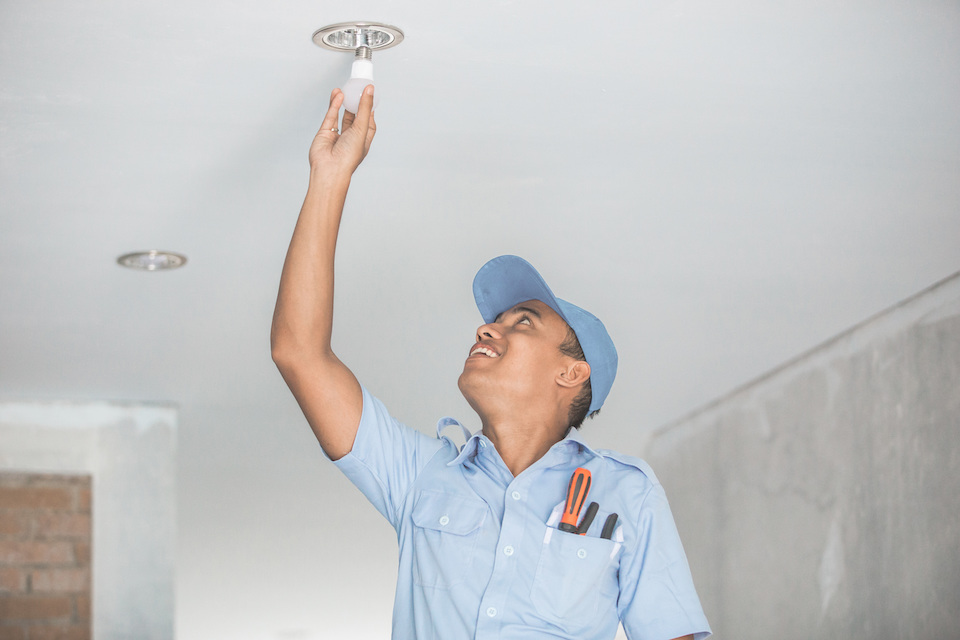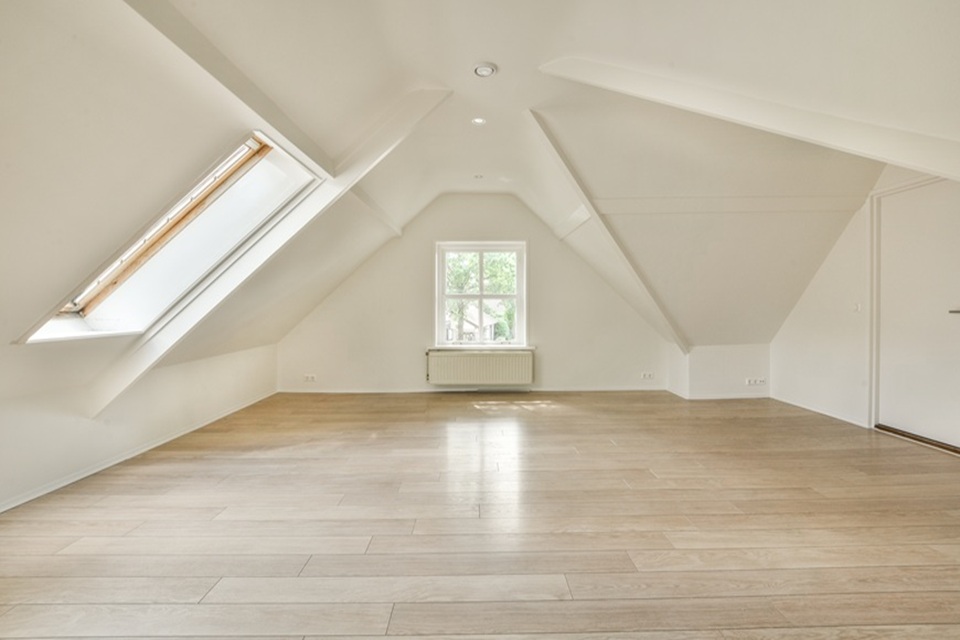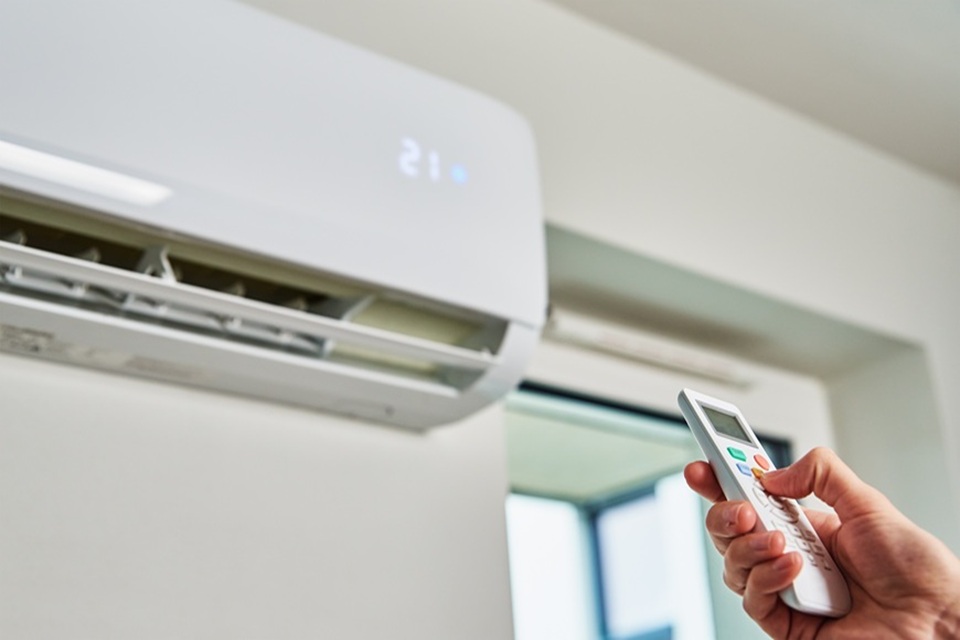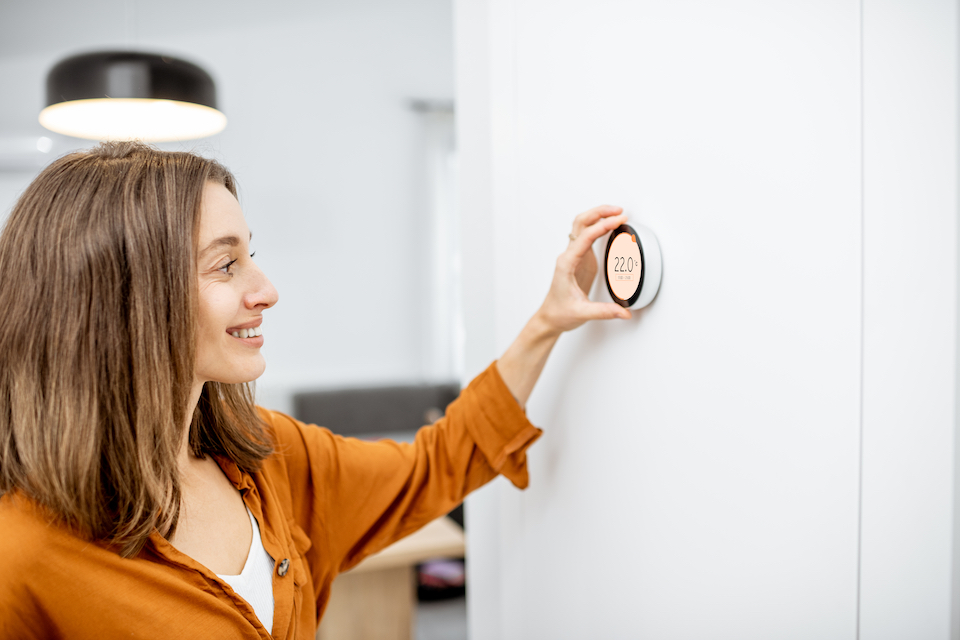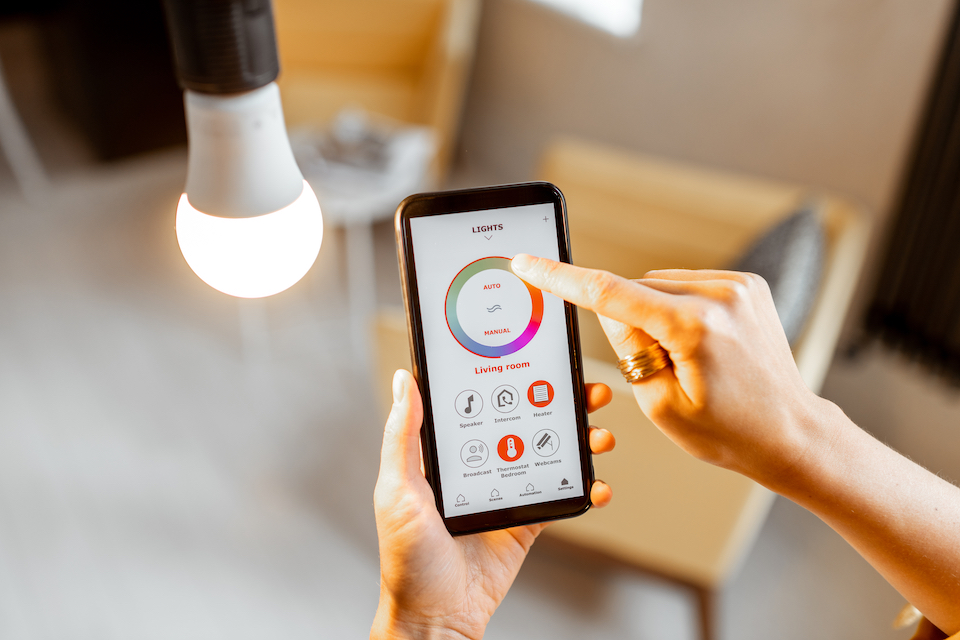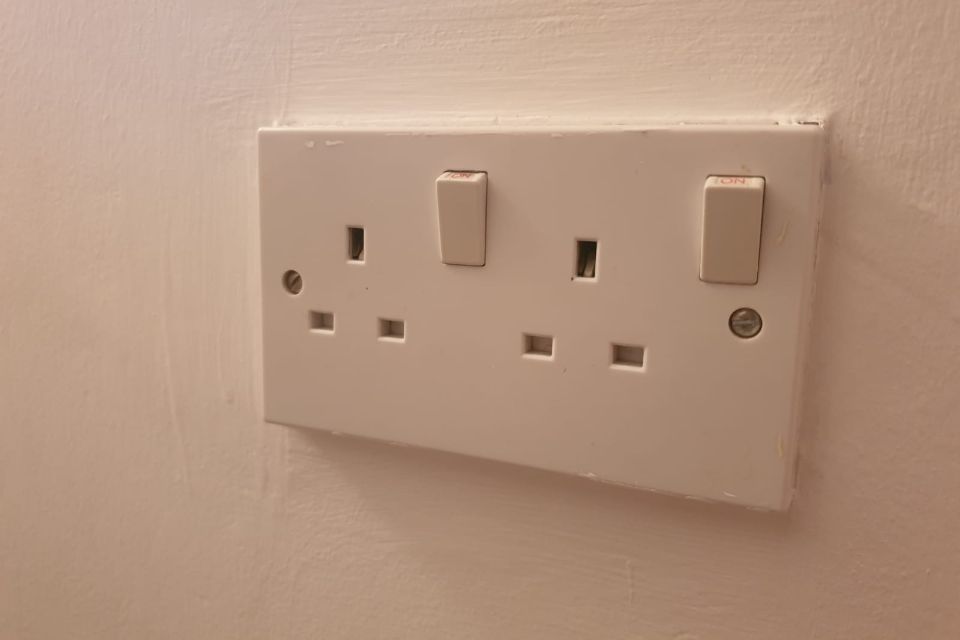How Much Does it Cost to Install Spotlights?
So, what are the downlights installation costs or spotlights installation cost?
The average cost of having one spotlight installed would land around £50 to £160, while the price to have four downlights or spotlights installed would be about £300 to £500.
If you want to pay for approximately 8-10 spotlights to be fitted, expect to pay somewhere in the range of £500 to £1,300.
We'll now break down the spotlights installation cost in more detail…
Spotlight Installation Prices
| Type of Installation | Labour Cost | Supply Cost | Total Costs |
|---|---|---|---|
| Single Spotlight | £30 to £80 | £20 to £80 | £50 to £160 |
| Four Spotlights | £220 to £250 | £80 to £320 | £300 to £570 |
| 8-10 Spotlights | £340 to £500 | £160 to £800 | £500 to £1,300 |
What are the Supply Costs for Downlights?
We’ll now move on to the standalone costs or supply costs. This is how much spotlights or downlights cost when purchased directly from the retailer. It excludes other expenses such as labour or waste removal (where applicable).
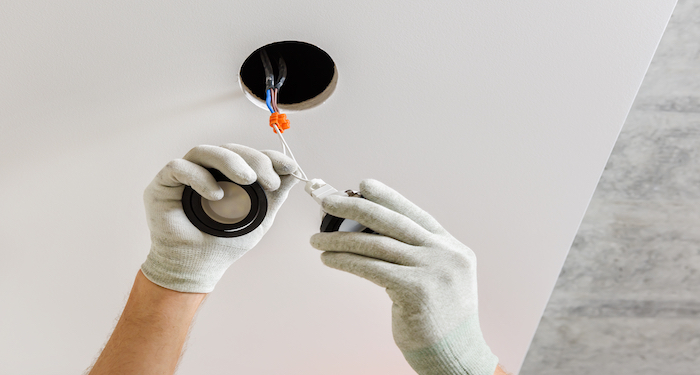
The supply costs are particularly useful to know if you intend to have spotlights installed DIY. However, you should only fit them yourself if you have the right skills and knowledge and understand exactly what's involved.
It’s always essential that you isolate the relevant electrics from the mains or turn off all power to ensure you do not suffer an electric shock.
The spotlight prices for one unit are around £20 to £80, whereas you'd need a budget of about £80 to £320 should you wish to buy four spotlights. Purchasing 8-10 downlights/spotlights would likely cost between £160 and £800.
Additional Jobs to Go with Installing Spotlights
If having downlights or spotlights installed by a professional, you may decide it's a good chance to pay them for an additional job or several additional jobs.
If you have an electrician on-site, why not get a few tasks out of the way you've been considering for a while?
Here are some suitable additional jobs to consider…
New Loft Lights
While you may be having spotlights installed in your kitchen or living room, it may interest you to have new lights installed in your attic. Thankfully this job should only take about two to three hours.
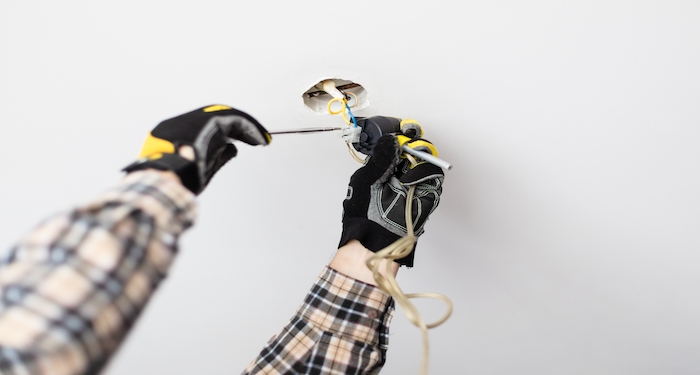
For around £100 to £150, an electrician can install a new loft light and fit a light switch outside the loft hatch.
Regularly accessing your loft can be made a lot safer with the installation of a bright loft light. A qualified and competent professional must undertake this work.
Outdoor LED Downlights for Security
Having an exterior security light fitted on your property is a fantastic way of improving the safety of your home and increasing peace of mind.
Security lights can deter possible burglars and alert you to the possibility of something loitering outside.
There are many types of exterior spotlights for security available. For example, a motion sensor would cost about £100 to £150 to have installed, while you'd probably pay somewhere in the range of £100 to £200 for a floodlight’s installation.
It would cost approximately £100 to £500 for an outdoor downlights/outdoor spotlights instalment, while the fitting price for landscape lights could range from £100 to £1,100.
Electric Cooker Installation
Have you been thinking of having an electric cooker added to your kitchen? There is a very wide range of electric cookers, so the installation prices will vary greatly.
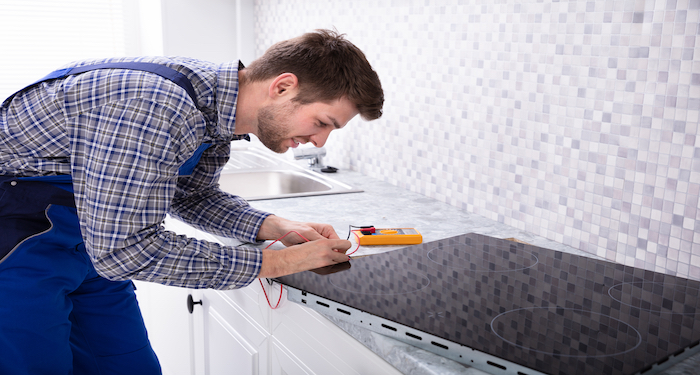
As you can see, even with specific installations listed, the prices can range massively. This comes down to the quality of the product, the brand and other factors like the region you live in (since labour prices differ across the UK).
Tradesmen Costs for Spotlights Installation
Now let's move on to the labour costs involved in installing downlights. This is what you'd pay the electrician for their work when fitting the lights and thus excludes the supply costs and any additional expenses (e.g., waste removal).
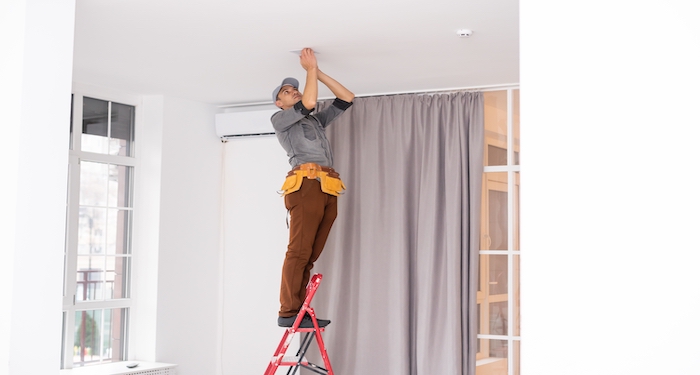
On average, electricians generally charge around £30 to £40 per hour or approximately £220 to £250 per day.
The labour costs would be around £30 to £80 for one downlight/spotlight, £220 to £250 (for a day's work, therefore) to have four spotlights installed and approximately £340 to £500 for the installation of 8-10 downlights or spotlights.
The labour cost of installing spotlights factors, including the scale of the job, ease of access and where in the UK you are based.
As touched on earlier, labour prices vary from region to region across the UK. Electricians tend to charge above-average rates in the southeast of England (London especially), while labour rates are generally lower in northern England, Northern Ireland and Scotland.
How Long Does It Take to Install Spotlights?
In this section, we’ll discuss the timeframes involved in having downlights or spotlights installed and the factors that can affect the length of the job.
It takes around one to two hours for a professional to fit one spotlight. However, having four installed may take around 6-8 hours. To have between eight and ten downlights/spotlights installed would last about a day and a half to two days.
The duration of the work would depend on factors such as the size and type of lights being installed as well as, of course, the number of lights being fitted.
How many electricians work on the job would also impact how long the work takes, although it's rare that more than one electrician would be involved.
Types of Spotlights
There is a range of different downlights/spotlights on the market. In this section, we'll look at what these different types are and explore their pros and cons.
Ceiling-Mounted Lights
Whether you want to have downlights or spotlights installed, one popular option is to have them mounted to the ceiling. They may come in the form of single lights (which are available in many designs) or as several lights.
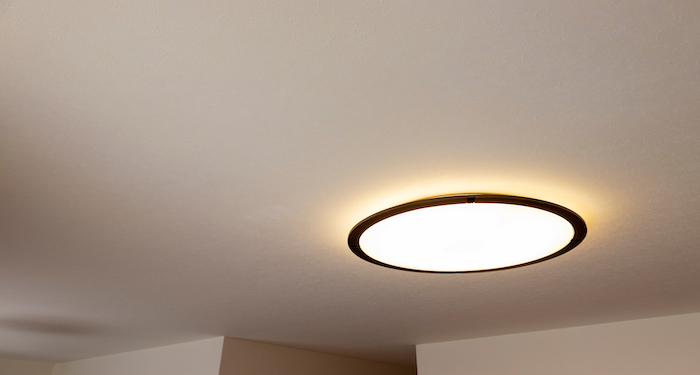
Examples of the latter include three-light LED providence lights and four-lighted spotlight bars. The cost of installing downlights/spotlights can, of course, depend on the exact design of the product and the brand in question, among other factors.
Pros:
- A popular and effective option
- Various types of ceiling-mounted options are on offer
- Wide range of products on the market
Cons:
- No specific downsides
Wall-Mounted Lights
Alternative options are wall-mounted spotlights/downlights. These lights, however, are best installed in conjunction with other ceiling-mounted spotlights/downlights rather than as standalone lights.
Pros:
- Can add to your room’s lighting
- Allows you to use a different space for additional spotlights/downlights
Cons:
- Won't suffice as lighting on their own
IP Rating
One common way of categorizing downlights is in relation to their IP rating.
No, we're not talking about the IP address of downlights (although we probably will in a few years!), but rather an IP rating or ingress protection rating determines how well light can protect itself from things like dust and water.
To be a little more specific, an IP rating describes how much light can, in general, protect against foreign bodies in the form of solid and liquid matter.
When it comes to the numbers used in an IP rating, the first digit refers to its protection levels against physical matter, whereas the second digit covers liquid matter such as water.
Lights with, say, an IP20 rating is touch-proof but not resistant to water, whereas any lights with a rating of IP44 or more are resistant to dust and water.
If the lights are rated above IP44 (i.e., both digits being higher than four), they may be used in bathroom zones 1 and 2, meaning that they could be mounted directly atop a shower.
For the most part, though, electricians would rather fit a light with an IP65 rating in these cases for more protection. It's essential that the IP rating of light suits its environment both for safety and practical purposes.
Let’s now look at some popular downlights based on their IP rating…
IP20 Downlights
An incredibly popular and straightforward choice is fixed downlights with an IP rating of 20. These lights, of course, point straight down. They are usually inexpensive and feature a small diameter.
Alternatively, you might want to consider adjustable IP20 downlights for more flexibility in terms of how the room is lit up.
IP20 downlights are not well-suited to bathrooms, but they are generally a fine option for kitchen installations. With that said, you could not fit them above a stove or sink as they would not offer sufficient water resistance (that being 0 – the second digit).
Pros:
- Commonplace indoor downlights for kitchens
- Generally cheap
- Small diameter
Cons:
- Not always a suitable choice (e.g., for bathrooms)
Outdoor IP44 Downlights
These lights are a suitable option for outdoor security lighting since, with an IP44 rating, they are sufficiently water-resistant to be used in an external setting. For instance, they might be installed on fascias and soffits.
Of course, not any IP44 downlight would be suitable for outdoor use since the actual materials and finish are also of concern when exposed to the elements. You want to avoid installing IP44 downlights that rust and deteriorate too easily.
Pros:
- Likely a relatively inexpensive option for outdoor lighting
- A good option for security lighting when you choose the right product
Cons:
- Generally, they are not the highest quality options for outdoor security lighting.
IP65 Bathroom Downlights
Downlights with an IP rating of 65 are a great option for bathrooms. Notably, plenty of lighting companies only provides integrated LED downlights as IP65s, which feature a dust/water-resistant seal.
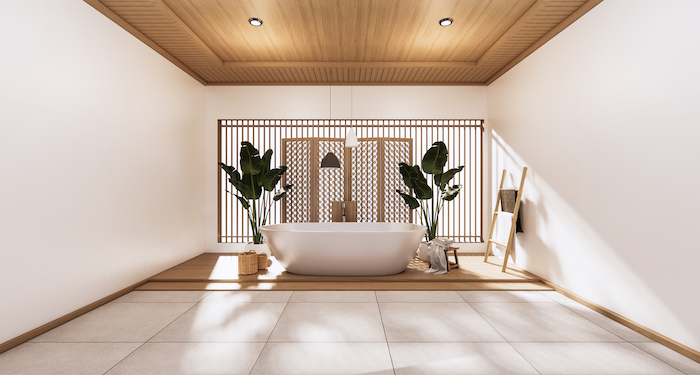
IP65 bathroom downlights can practically be installed anywhere suitable for a light to be installed. You should be aware, though, that for long periods of immersion, bathroom lighting and electricians need an IP rating of 68.
Pros:
- Ideal for bathrooms
- Plenty of integrated LED downlights with IP65 ratings
- It can be installed almost anywhere
Cons:
- Maybe a bit more expensive
How Much Does It Cost to Remove Downlights?
Whether you’re thinking of having current downlights removed or might at some point down the line, you might be interested in knowing how much this would cost.
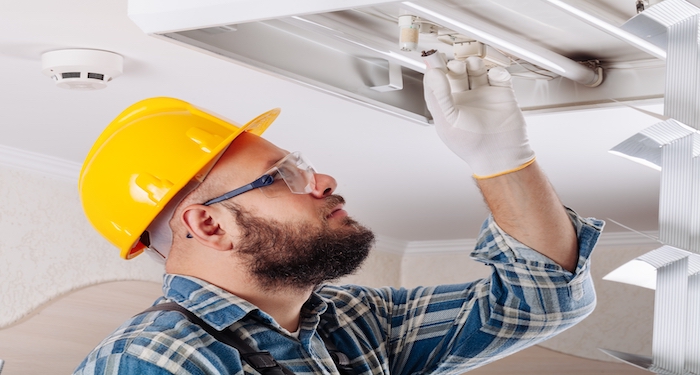
You may consider removing these lights to have new types of lighting installed in their place or because you no longer have a need for said lighting source in a given room.
To simply have spotlights removed (so not looking at the costs of any replacements, if applicable) would come with a labour cost of around £30 to £80, with the work likely to take somewhere between one and two hours, depending on the number of lights being removed.
Of course, some time would need to be set aside for the clean-up and waste removal.
Old lights and electrics can’t be disposed of with general waste, however. For that reason, you may face a small additional fee to deal with the waste removal.
Some potential solutions for disposing of old lights/electrics are:
- Kerbside collection.
- Handing them over to certain retailers (if the electrics are in the right condition etc.).
- Dropping the items off at a nearby recycling centre.
If in doubt, get in touch with those who run one or more of the aforementioned locations and check if they'll take your lights and their electrics.
FAQs
Q: How do you replace halogen downlights?
A: You may want to replace your halogen downlights with the more efficient alternative of LEDs.
If in doubt about any part of the process, you should hire a qualified electrician.
The exact process can vary depending on the products, among other factors (so it's best to check the manufacturer's guidance for certainty), but here is, broadly speaking, what is involved:
- Ensure that the main power to the lighting circuit is turned off. This is crucial to prevent an electric shock that could be lethal.
- Remove the halogen bulb.
- Next, you’ll need to find the cable that is fitted into the Halogen holder’s terminal block. Unscrew this so that the holder itself can be released.
- Remove the halogen bracket.
- Locate the two mains wires that were previously hooked up to the Halogens. Connect them to the mains 240vAC input of the LED transformer. You should see polarity ensuring that the live wire is hooked up to the LED transformer's live input, with the neutral wire being connected to the neutral input. It's also important to note that there should be two mains cables hooked up to the downlights that are followed by another. This is to make sure that the voltage can be carried to the next downlight within the circuit.
- Place the LED transformer through the ceiling hole. Fit it into place before installing the LED downlight itself. It's important to pull the spring retaining clips back to place the LED downlight incorrectly and ensure a correct fitting.
- Repeat each of the above steps for every downlight being replaced with an LED.
- Once everything is firmly in place, installed and definitively safe, you can turn back on the mains power to the lighting switch.
- Turn on your new LED downlights using the light switch. If all looks good, you've successfully completed the installation of the new LEDs in place of your old halogen downlights. You'll now enjoy brighter and more energy-efficient lighting as a result!
Q: How long do downlights/spotlights tend to last?
A: Spotlights have a life expectancy of up to 50,000 hours. As a result, there’s a good chance they can last for as much as a decade.
This is far better than halogen and incandescent light bulbs, which are expected to last for around 1,000 to 2,000 hours. However, the most durable option would be dimmable LEDs which tend to last for as long as 100,000 hours or perhaps up to twenty years or more!
Q: What IP rating is needed for a light fitted above a stove or sink?
A: While a downlights/stoplights fitted in a kitchen can generally have an IP rating of just 20, if they are installed over a stove or kitchen, then water resistance will be very important. As a result, you’ll want an IP rating of at least x4 (e.g., 44).
Q: What distinguishes an IP67 rated lighting fixture from one with an IP68 rating?
A: 1P67 lights can protect virtually 100% against dust as well as protecting against water immersion on a temporary basis. However, for the former level of protection against dust AND protection against long-term immersion, you’ll need an IP68 bathroom light.
Q: What are fire rated downlights?
A: These downlights are designed to restore the fire integrity of a ceiling after a hole has been cut to fit the light in place. In other words, having one of these lights installed shouldn't make your ceiling any less resistant to fire.
As a result, fire-rated downlights must be able to pass a relevant fire resistance test.
Sources
- https://www.downlights.co.uk/faq-downlight-types.html
- https://www.thelightingsuperstore.co.uk/interior-lighting/spot-lights
- https://plumbworld.co.uk/bathroom-zones-ip-rating-infopage
- https://www.savemoneycutcarbon.com/learn-save/ip-ratings-by-room/
- https://litewave.co.uk/replacing-your-inefficient-halogen-downlights-with-leds-248310.html

